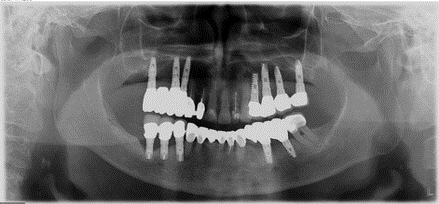Optima Stroke
Predicting the Risk of Stroke

Optima Stroke Product
The detection of the accumulation of fatty deposits in the carotid arteries before the onset of stroke symptoms has a critical impact on the patient’s future quality of life. It also results in the saving of the huge costs incurred as a consequence of having a stroke.
Early detection will determine the need for aggressive management of the risk factors that cause atherosclerosis (diabetes, hypertension, hyperlipidemia, smoking, overweight, excess alcohol and lack of exercise), which can stabilize the condition and prevent the occurrence of stroke and other cardiovascular events.
Preventing incidents will reduce the costs of hospitalization, surgery, rehabilitation, nursing, and the treatment of related complications.
Stroke Facts
Strokes are the second leading cause of death and the third leading cause of disability worldwide
A stroke is a medical emergency in which blood flow to the brain is interrupted or reduced, preventing brain tissue from receiving oxygen and nutrients, causing rapid cell death.
The risk of having a stroke increases as a result of several factors, including age, overweight, heavy drinking, smoking, high blood pressure, high cholesterol, and diabetes.
Stroke is a disease of immense public health importance with serious economic and social consequences.
Strokes occur in all age groups, and their incidence doubles every 10 years after the age of 55.
One in four people aged over 25 will have a stroke in their lifetime.
Stroke is an immense economic burden on healthcare systems.
There are over 15 million new cases of stroke globally each year.
Clinical Objective
The clinical purpose of the product is to identify patients with calcification in their carotid arteries. This calcification is a sign of atherosclerosis (plaque buildup in arteries), and therefore has two important clinical implications:
Atherosclerosis in the carotid arteries can also indicate atherosclerosis in other blood vessels, including;
Atherosclerosis in the carotid arteries can also indicate atherosclerosis in other blood vessels, including;
- The coronary arteries that supply blood to the heart presenting a risk of myocardial infarction.
- The limb arteries causing pain in the calf muscles when walking and in severe cases even leading to amputation.
- Arteries supplying intra-abdominal organs (kidneys and intestines) leading to their impaired function.

Strokes frequently result from plaque deposits or carotid artery blockage
Wang, X., Chen, X., Chen, Z., & Zhang, M. (2022). Arterial calcification and its association with stroke: implication of risk, prognosis, treatment response, and prevention. Frontiers in Cellular Neuroscience, 16, 845215.
The Information is Present in the System!
Optima Stroke deciphers the condition of the carotid arteries and identifies calcifications by:
Analyzing the information contained in standard panoramic dental X-rays taken for the purpose of routine dental care. Optima Stroke developed AI models based on deep learning convolutional neural networks and transfer learning which enable the accurate automated detection of carotid calcifications through the analysis of panoramic dental radiographs.
Combining the analysis with data from the patient’s medical records.

Panoramic X-Ray Image Labelling






Platform Input

Platform Output

97%
Specificity
(True Negative)
Detection Accuracy

87%
Recall
(True Positive)
Product Implementation
Optima Stroke will be implemented through dental clinics associated with public and private healthcare systems. Optima Stroke works continuously and automatically in the background, analyzing every panoramic x-ray taken, and immediately notifies the appropriate healthcare giver when a patient is identified as being of risk of having a stroke.
Through the implementation process, Optima Stroke overcomes two additional inherent obstacles to taking advantage of this knowledge:
Dentists lack the awareness and professional training to search for and identify the indications.
General practitioners do not have access to the panoramic X-rays and also lack the specific training needed to analyze them.

Summary
The Optima Product was developed to reduce strokes through preventive medicine.
Optima predicts the risk of stroke by analyzing the information contained in standard panoramic dental X-rays taken for the purpose of routine dental care.
Once implemented in a healthcare system, Optima works continuously and automatically in the background, analyzing every panoramic X-ray taken, and immediately notifies the appropriate healthcare giver when a patient is identified as being at risk of developing a stroke.
Decreasing stroke incidents will reduce expenses arising from hospitalization, surgery, rehabilitation, nursing, and the treatment of related complications.

